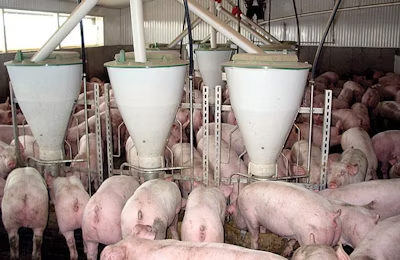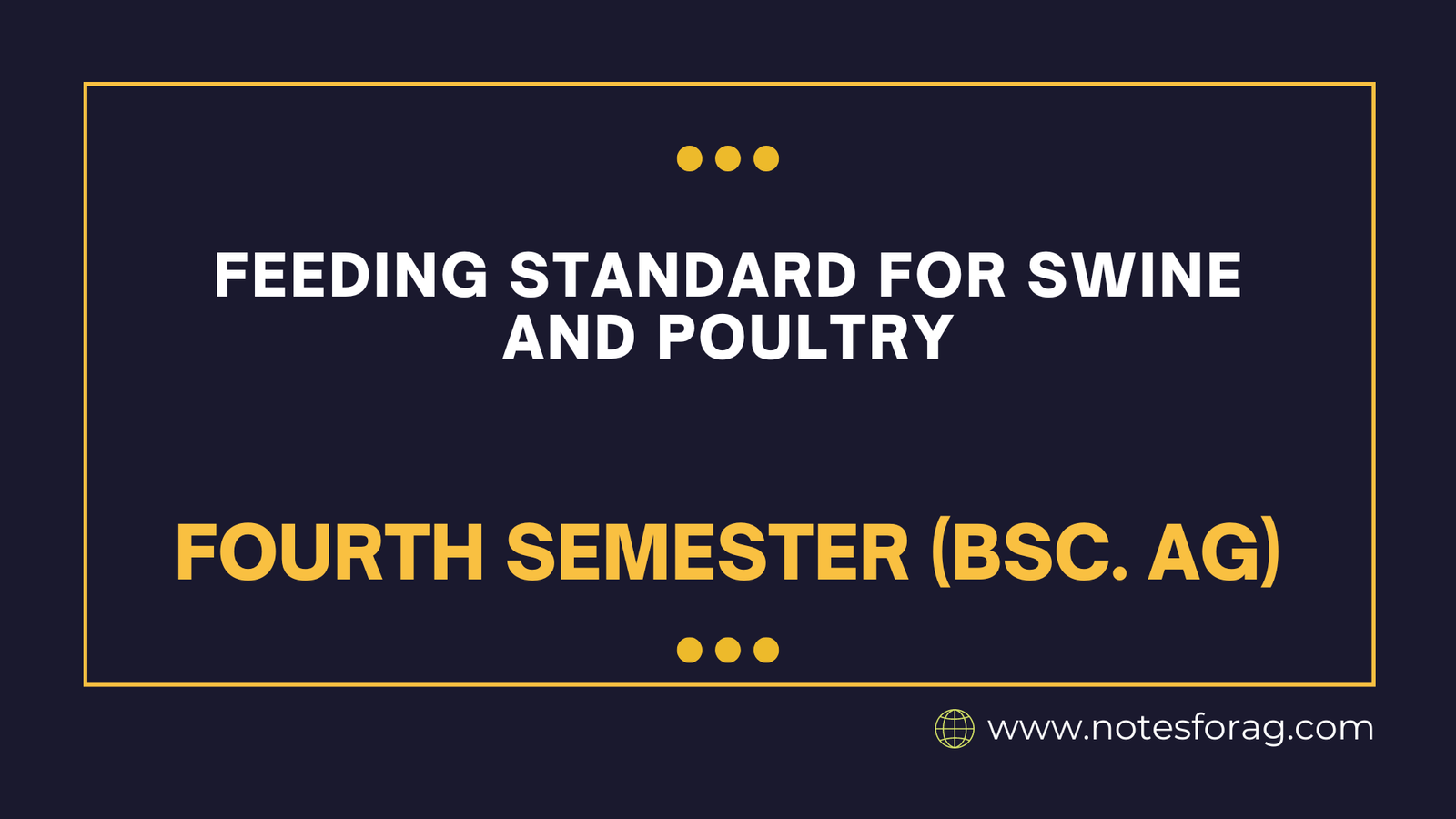Swine (pigs) and poultry (chickens, turkeys, etc.) are vital sources of protein for human consumption. However, their growth and health depend heavily on a well-defined feeding strategy. This entails giving them the proper nutritional balance and proportions at various periods of their lives. Here’s a closer look at swine and poultry feed guidelines.
Table of Contents
Why Feeding Standards Matter?
- Growth and Development: A balanced diet ensures proper growth, development, and muscle deposition in swine and poultry. This translates to better meat quality and production efficiency.
- Reproduction: Proper nutrition is crucial for successful breeding and healthy offspring in swine and poultry.
- Health and Immunity: A well-formulated diet strengthens the immune system and reduces the risk of diseases in these animals.
- Economic Efficiency: Meeting the exact nutritional needs, without providing excess nutrients, helps optimize feed costs and reduce waste.

Factors Affecting Feeding Standards
There’s no “one-size-fits-all” feeding standard for swine and poultry. Several factors influence their dietary needs:
- Species and Breed: Different breeds within swine and poultry can have varying growth rates and nutrient requirements.
- Age and Stage of Production: Nutrient requirements vary throughout an animal’s life cycle. Piglets require a different diet than growing pigs or breeding sows. Similarly, chicks have different requirements than laying hens.
- Physiological Status: Pregnancy, lactation in sows, or egg production in hens all require adjustments to the feeding regime.
- Environmental Conditions: Temperature and humidity can affect an animal’s appetite and metabolism, influencing feed intake.
- Activity Level: More active animals may require higher energy intake compared to those with lower activity levels.
Components of a Swine and Poultry Diet
The core components of a swine and poultry diet typically include:
- Energy: Provided by carbohydrates and fats, energy is essential for all bodily functions, growth, and activity. Corn, wheat, and barley are common sources of energy in these diets.
- Protein: Needed for building and repairing tissues, protein plays a crucial role in muscle development. Soybean meal, fishmeal, and other protein sources are incorporated into the feed.
- Minerals: Calcium, phosphorus, salt, and other minerals are required for bone health, muscular function, and many metabolic activities. Mineral premixes are commonly used to guarantee that these requirements are met.
- Vitamins: Vitamins like vitamin A, D, E, and B vitamins are crucial for various functions, including vision, immune function, and nerve transmission. Vitamin premixes are used to supplement these micronutrients.
- Fiber: While not a major energy source, fiber is important for gut health and digestion in swine and poultry.

Feeding Standards – Approaches and Considerations
There are two main approaches to setting feeding standards:
- Nutrient-based Feeding: This approach focuses on providing specific amounts of essential nutrients (protein, energy, minerals, vitamins) based on the animal’s requirements. This allows for more tailored diets based on specific needs.
- Feed-based Feeding: This method focuses on giving a comprehensive feed mix that includes all required nutrients in specified quantities. This is a simpler solution, but it may not be as adaptable for meeting individual demands.
Considerations in Implementing Feeding Standards
- Feed Quality: The quality and digestibility of feed ingredients significantly impact nutrient utilization and overall animal performance.
- Feed Management Practices: Proper storage, handling, and delivery of feed ensure its quality and prevent spoilage or contamination.
- Monitoring and Adjustments: Regular monitoring of animal growth, health, and feed intake allows adjustments to the feeding regime if needed.
Conclusion
Feeding requirements are critical to effective swine and poultry production. Producers can maintain optimal development, health, and economic efficiency in their animals by understanding the factors that determine nutrient demands, following established feeding guidelines, and consulting nutritionists. As research advances, feeding strategies and formulas are expected to become more sophisticated, resulting in even greater improvements in animal welfare and production efficiency.
Frequently Asked Questions (FAQs)
What is the standard of feeding poultry?
A starter diet is about 24% protein, grower diet 20% protein, and finisher diet 18% protein.Layer diets generally have about 16% protein. Special diets are available for broilers, pullets, layers, and breeders. Whole grains can also be provided as scratch grains.
What is the feeding guideline for chickens?
On average, a healthy adult chicken will consume 1/4 to 1/2 pound of feed every day. However, this quantity varies according to age, weight, breed, and activity level.
What is the ratio of swine feed?
Early growing pigs convert dietary feed at less than 2:1 F/G while finishing pigs convert feed at over 3:1 F/G.
Related Articles

